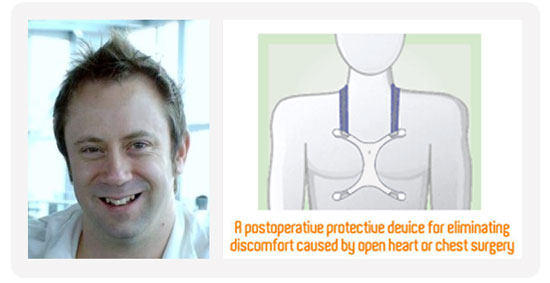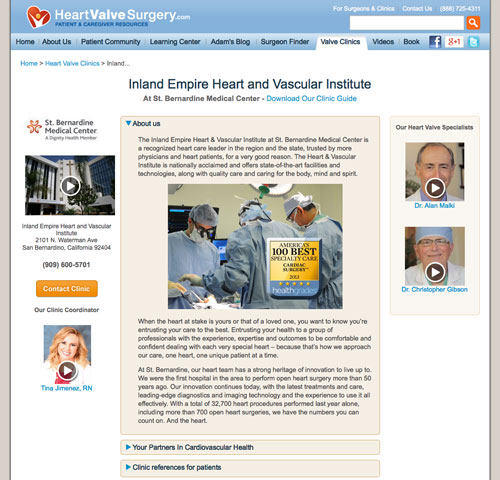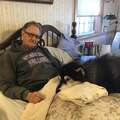Adam's Heart Valve Surgery Blog – Page 34
The 4 Good Habits That Promote a Long, Healthy Life
By Adam Pick on May 19, 2014
After I posted the story about my recent Fitbit experience, I received several encouraging comments about the habits and the behaviors that promote a long, healthy life.
In thinking about further… I think we can agree that fatigue, decreased muscle density and reduced flexibility are all proponents of aging. However, the better care you take of your body, the longer you’ll be able to enjoy the activities you love. At any age, staying healthy means eating a nutritious diet, exercising regularly and taking care of your mind, body and spirit. Extend and enjoy your life by implementing one or all of the following tips:

After 7 Heart Surgeries, Liver Failure & Kidney Failure, Irvin Is Beyond Thankful For Dr. Shemin
By Adam Pick on May 14, 2014
If you didn’t know, I moderate all of the patient recommendations we receive at our Surgeon Finder. Earlier today, I saw a testimonial from Irvin that made me think, “That’s incredible! I gotta share this with our community!”
So, without further ado, here is what Irvin posted: Luckily, Dr. Richard Shemin took on my case which was a #9 in difficulty (10 being the most difficult!). He performed my 5th open-heart surgery while I was in kidney and liver failure from my heart valves being in shambles and not getting blood to my organs. I had 7 previous heart surgeries. Four were aortic valve replacements and 3 where pacemaker surgeries all from the time I was age 21 due to a congenital defect in my aortic valve.
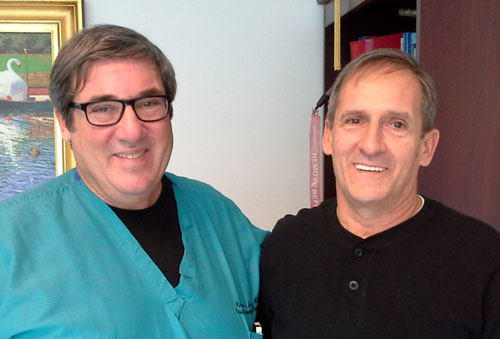
After one of my last surgeries in 2003, I finally went through a 10 year period of fairly good health. I was even able to lift weights, and worked up to bench pressing up to 250 lbs. Then, in February of 2013, at the age of 59, I wasn’t feeling well. But, I didn’t know why. I eventually saw a kidney specialist who told me that I was in 4th stage kidney failure. My wife and I were shocked!
Ask the Expert: Safety, Technology & Heart Valve Surgery
By Adam Pick on May 6, 2014
As a patient, I distinctly remember the questions that raced through my brain when I learned that I needed open heart surgery. Those questions sounded a little something like “How do they fix my valve?” and “What will the recovery be like?” and “Will it hurt?” and, of course, “Is heart valve surgery safe?”
That last question about safety is critically important for many reasons. So, to learn more about the safety of heart valve procedures, I met with Dr. Christopher Gibson. During our conversation, Dr. Gibson shared many insights about how technology has enhanced the safety and the mortality rates of valvular procedures.
I hope this video helped you learn how technology is improving the safety and the mortality rates of open heart procedures including heart valve operations.
Guest Blog: “What the Incision Shield Meant to Me” by Dennis
By Adam Pick on May 1, 2014
Years ago, I learned about a unique product designed to help patients take care of their incision after surgery. The device, called the Incision Shield, protects your incision against unwanted pressure and ensures that no materials (e.g. clothing or linens) rub up against your scar. To see what patients thought about the Incision Shield, I gave away 30 Incision Shields to the members of our community. The response was fantastic.
A few days ago, I spoke with Dennis, a patient, about his experience with the Incision Shield. Dennis was so excited about the impact of the Incision Shield on his recovery, he ordered 15 more Incision Shields to give away to other heart valve patients.
In a follow-up email, Dennis wrote to me:
St. Bernardine Launches Heart Valve Clinic Microsite!
By Adam Pick on April 24, 2014
I am very excited to announce that the Inland Empire Heart & Vascular Institute at St. Bernardine Medical Center just launched a new Heart Valve Clinic Microsite at HeartValveSurgery.com. So you know, many patients from our community — including Fred Stieg, Eugenie Magana and Charlene Wasson — have had great surgical outcomes at St. Bernardine.
If you didn’t know… St. Bernardine has been performing open heart procedures for more than 50 years. To see their new microsite, please click here.
Another interesting fact is that St. Bernardine is one of the largest cardiac programs in Southern California. During 2013, the St. Bernardine team performed over 700 open heart procedures including the full spectrum of valve therapies — including mitral valve repair and aortic valve replacement.
Cleansing Your Body, Mind & Home After Heart Valve Surgery
Written By: Adam Pick, Patient Advocate, Author & Website Founder
Page Last Updated: May 12, 2025
You’re home from the hospital. You have a fixed heart.
Most likely, the doctors who performed your heart valve operation sent you home with a list of do’s and dont’s for the early recovery and beyond. So you know, a healthy diet can speed healing and lessen fatigue, according to the American Heart Association, which also recommends a healthy weight and active mind to decrease the amount of work your heart must do to allow for optimal recovery.

To clean up your body and mind—and your home, as there are health benefits for doing so—follow your doctor’s advice and these three expert tips:
The Fitbit Helps Me Gain Energy & Lose 17 Pounds
By Adam Pick on April 11, 2014
I’m no Richard Simmons.
I’m also no Body by Jake or Tony Horton (from P90-X).
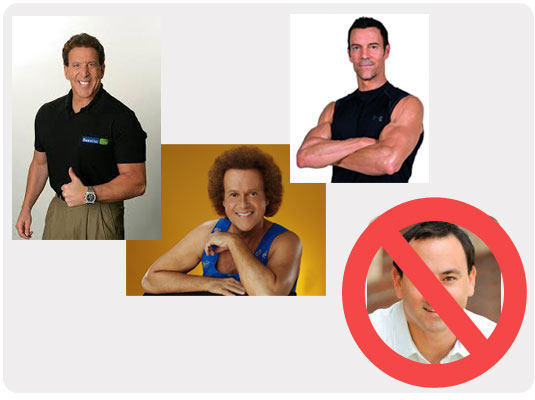
I’m just a guy who wants to live a healthy life.
So, on December 31, 2013, myself, Robyn (my wife) and two other couples decided to enter a “2014 Health Challenge”. For me, the goal of this friendly competition was to feel better through exercise, nutrition and meditation. While weight loss was not my primary goal for joining the challenge, I felt that I could easily lose 15 pounds of unwanted fat that mysteriously attached itself to my gut since I turned 40, two years ago.
Continue reading this post »
Surgeon Q&A: Advancing Mitral Valve Repair Using 25 Years of Experience & Robots!
By Adam Pick on April 8, 2014
I was very fortunate to recently connect with Dr. Alfredo Trento, the Chief of Cardiac Surgery at Cedars-Sinai Medical Center in Los Angeles. As you may know, Dr. Trento has successfully treated many patients from our community including Jerry Andis, Terry Beaschler and Patricia Shabel.
Considering that Dr. Trento is a cardiac guru, with over 25 years of experience, I was very interested to learn about his surgical approach to valve disease. As you will see in this video, Dr. Trento had several interesting comments about the evolution of cardiac surgery, the importance of timing surgical processes, and the use of robots to enhance surgical outcomes for procedures including mitral valve repair.
This HVJ Gang Reunites In Florida… Again!
By Adam Pick on April 1, 2014
As Spring approaches, there is much to get excited about… The return of warm weather, long days full of sunshine, family trips, baseball, barbecues, blooming flowers, and the joy of being outside.
Personally, I look forward to receiving a special picture as Spring arrives. For, as you can see below, the HVJ gang of Duane, Cheryl, Richard and Fran, reunited — once again — in Florida to celebrate their fixed hearts, each other, their spouses and the Spring season. (I think this is now the third annual event!)
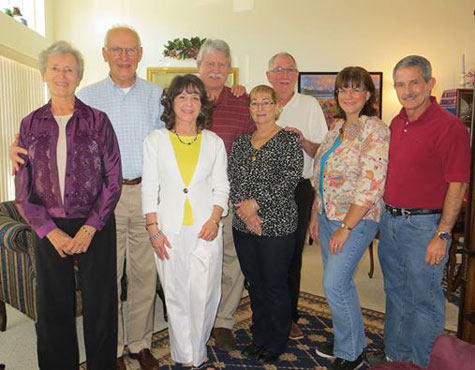
In moments like this, I marvel at the power of the Internet. To think that these four patients would face a life threatening heart valve disease, at the same time, meet online, go on to have successful surgeries, and then continue to be such great friends afterwards… makes me smile. 🙂
Many thanks to Duane, Fran, Cheryl, Richard and their spouses — Peggy, Peter, Susan and Peter — for sharing this picture with me. Now, I know Spring is coming on strong.
- To connect with our patient community, click here.
Keep on tickin!
Adam
Guest Blog: 25 Tips To Prepare Women For Heart Surgery
Written By: Adam Pick, Patient Advocate, Author & Website Founder
Page Last Updated: June 3, 2025
Every so often, I receive a patient email that makes me think, “Holy Moly! I need to share this with our community!”
The email below from Christine Wagner triggered that exact reaction. So, for that reason, I am featuring Christine’s story as a special “Guest Blog” because I believe her patient tips are going to help so many patients in our community — especially the women!
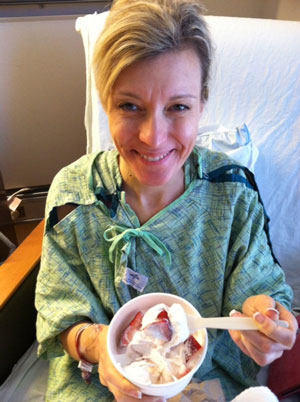
Christine’s Story
My name is Christine Rekash Wagner and I am 42 weeks post-op from a mitral valve repair performed by Dr. Patrick McCarthy and his surgical team on June 13, 2013 at Northwestern Memorial Hospital in Chicago. I have been a patient of Dr. Robert Bonow since March 2, 2006 with a mitral heart valve disorder. After several years of yearly echocardiograms and a watchful eye, in October of 2009, I was diagnosed with a leaky mitral valve. Most recently, in October of 2012, I was advised that the results of my yearly echo demonstrated that my mitral valve regurgitation was becoming severe enough that I should consider surgery while I was a young and healthy 41 year old female.
Surgeon Q&A: Aortic Valve Repair & Valve Sparing Aortic Root Replacement with Dr. Ali Khoynezhad
By Adam Pick on March 25, 2014
Together, we have learned about many different types of surgical procedures used to treat heart valve disease and related cardiac disorders including coronary artery disease, atrial fibrillation and aortic aneurysms.
Two procedures that I’m continuing to hear about these days are aortic valve repair and valve-sparing aortic root replacement. To learn more about these unique approaches to aortic valve disease and aortic aneurysms, I recently connected with Dr. Ali Khoynezhad who is the Director of Aortic Surgery at Cedars-Sinai in Los Angeles, California. As you can see here, Dr. Khoynezhad has successfully treated 18 patients from this website.
Speaking Announcement: Thanks to the ACC & Cedars-Sinai for Inviting Me to Talk Tomorrow at “Championing Care”
By Adam Pick on March 11, 2014
Many thanks to the American College of Cardiology and Cedars-Sinai for inviting me to speak at the “Championing Care for the Patient with Aortic Stenosis” event tomorrow, Wednesday, March 12 at 1pm PST.
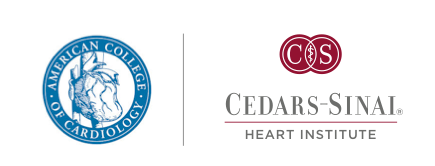
As you can see on the agenda below this is going to be a wonderful educational event. To learn more about the event, click here.
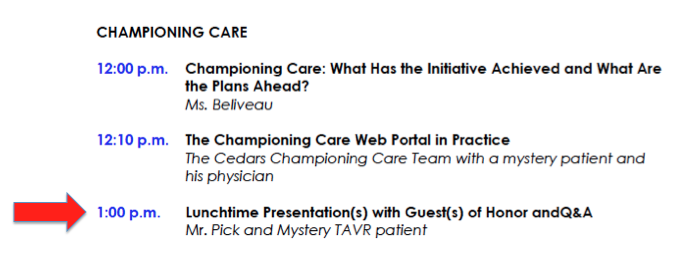
If you are going to the event, I look forward to seeing you there!
Keep on tickin!
Adam
Surgeon Q&A: Are Coumadin Requirements Being Lowered for On-X Mechanical Valve Replacements?
Written By: Adam Pick, Patient Advocate, Author & Website Founder
Page Last Updated: May 8, 2025
As we have learned together, there is no “perfect” valve replacement for patients who cannot have their own valves repaired. That said, as patients, we must weigh the pros and cons of each valve type – pig, cow, horse and mechanical – to determine which device is best for us given factors including age and lifestyle.
The mechanical valve replacement is an interesting choice for patients. It’s been around for over 40 years. It’s the most durable valve comprised primarily of a special form of carbon— pyrolytic carbon—that can last more than 100 years with the pressures inside the heart. And, there is some research, which suggests that patients who receive mechanical valves have lower complications over a 25-year period.
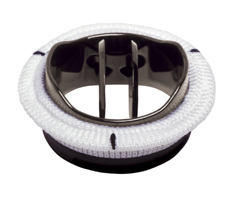
However, there are two disadvantages for mechanical valve recipients. First, some patients complain that mechanical valves “click” loudly inside the body – which can be annoying. Second, all patients who receive a mechanical valve must take anticoagulants (blood thinners) to prevent the risk of blood clots forming on the valve – for the rest of their lives.
For some patients, the thought of permanently being on blood thinners is just too much handle. As a result, some patients choose a tissue valve and risk the possibility of a future re-operation when their pig, cow or horse valve fails. But mechanical valves sometimes need to be removed from rare incidences of infection or clots.
Science News: 2014 Heart Valve Disease Management Guidelines Announced by the AHA / ACC
By Adam Pick on March 5, 2014
If you didn’t know, there are physician guidelines for the management and treatment of heart valve disease. These guidelines, which were created by the American Heart Association and the American College of Cardiology, are used by your cardiologist and heart surgeon to determine the best approach for the treatment of valvular disorders including aortic stenosis and mitral regurgitation.
The big news of the week is that the 2014 guidelines have just been released. To help you learn why these guidelines are so important, here is a video with Dr. Robert Bonow, a leading cardiologist at Northwestern Medicine, who has been working on these guidelines for many years.
A Look at the Advancements in Heart Surgery
By Adam Pick on March 3, 2014
The world’s very first heart surgery was said to have taken place only a little more than a century ago. Today, it’s almost common place, with millions undergoing surgeries like cardiac catheterizations, coronary artery bypass grafts and valve related procedures.
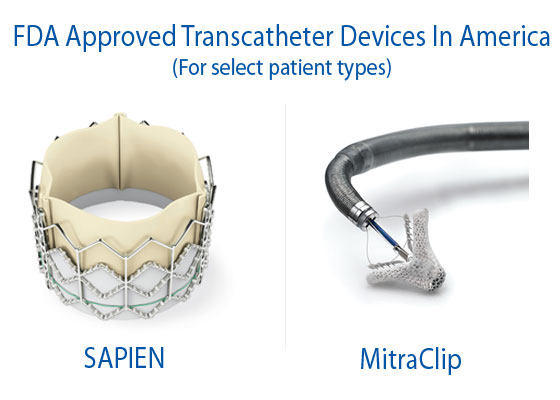
Back in 1893, medical textbooks stated that operating on a human heart was too dangerous, but a physician by the name of Dr. Daniel Hale Williams decided to take the risk without the benefit of X-rays, antibiotics, proper anesthesia or other modern surgery tools. His patient survived and was discharged almost two months later; the operation is now widely considered to be the first successful open-heart surgery.
Since that time, there have been many advances in heart surgery.
Heart-Lung Machine
The introduction of a heart-lung machine in 1953 was a major milestone in heart surgery, but it was still considered extremely risky with only 1 out of 5 patients surviving at the time. Since then, the machine has significantly improved, developing into the sophisticated piece of equipment we know today. For over three decades, the heart had to be stopped during bypass surgery but in more recent years new pieces of equipment that stabilize the heart have been created, allowing surgery on a heart that is still beating.
“What About Breast Implants Before Heart Surgery?” Asks Dorata
By Adam Pick on February 24, 2014
I received an interesting question from Dorata about breast implants, echocardiograms and minimally invasive heart valve surgery. In her email, Dorata writes, “Hi Adam, I’m expecting a mitral valve repair surgery in a few years. I’m considering having breast implants now. I am wondering if breast implants interfere with the echocardiographic examination and minimally invasive surgeries?”
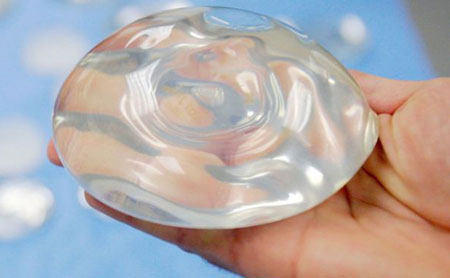
Getting Ready for Your Heart Surgery Recovery at Home
Written By: Adam Pick, Patient Advocate, Author & Website Founder
Page Last Updated: May 11, 2025
More than half a million heart surgeries are done each year in the United States, according to the National Institute of Health. This once scary surgery is becoming more-and-more commonplace, and with increasing success rates, more people are recovering at home after their hospital stay. However, please get your home ready BEFORE you go in for surgery to make sure your are prepared. Here are a few suggestions for you, your family and friends.
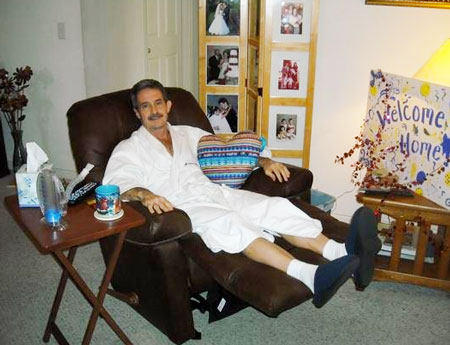
Be Patient With Your Recovery
You should receive discharge instructions from your doctor when you leave the hospital, but it helps to be mentally prepared for a recovery time of several weeks or months, notes WebMD. This may vary depending on your health prior to the surgery, any complications that happened while in the hospital, and your motivation to follow instructions when you get home.
Bernie Marcus, Home Depot Co-Founder, Donates $20 Million To Launch Heart Valve Center at Piedmont Heart
By Adam Pick on February 4, 2014
Over the past 9 months, I’ve been very fortunate to meet several surgeons from Piedmont Heart Institute in Georgia. As you might recall, I recently attended a medical mission in the Dominican Republic with Dr. Federico Milla and Dr. John Gott.
If you didn’t know… Piedmont Heart received a $20 million donation from Bernie Marcus, co-founder of Home Depot, to launch a dedicated heart valve reference center in Atlanta. Here is a really neat interview with Mr. Marcus about the reasons he wanted to create a new heart valve center at Piedmont.
As a regional valve reference clinic, the Marcus Heart Valve Center has been designed to be a “one-stop shop” for patients with heart valve problems. In addition, the Marcus Heart Valve Center is developing academic capabilities to help teach physicians about the latest advancements in valvular disease.
Keep on tickin!
Adam
Technology Update: Using 4D-MRI to Advance Bicuspid Aortic Valve Therapy
Written By: Adam Pick, Patient Advocate & Author
Medical Expert: Paul Fedak, MD
Page Last Updated: May 12, 2025
Like many of you, I was born with a bicuspid aortic valve. For that reason, I’m overly interested to learn more about this valvular disorder that impacts 2% of the population.
Recently, I had a special opportunity to meet and interview Dr. Paul Fedak, a cardiac surgeon, scientist and Director of Translational Research at the Northwestern Bicuspid Aortic Valve Disease Program. As you will see in this video, Dr. Fedak and his team is using the latest technology, 4D-MRI, to better understand and treat bicuspid aortic valves.
I hope this helped you learn more about bicuspid aortic valves, aortic aneurysms and the research going on at Northwestern to improve bicuspid aortic valve treatment. I’d like to extend a special thanks to Dr. Paul Fedak and the Bicuspid Aortic Valve Program at Northwestern for all of their incredible work.
Thanks to Jessie and Max, JoyJars Bring Smiles to Children with Cancer and Heart Disease
By Adam Pick on January 18, 2014
We all encounter challenges in life. Some are small. Some are big. And, some are devastating. How we respond to those challenges is up to us. We have a choice. Some of us retreat. Others rise above.
The story of Jessie Rees is an extraordinary example of someone who chose to rise above. In 2011, Jessie — at the young age of 12 — was diagnosed with a life-threatening form of brain cancer. During her out-patient treatment, which included radiation and chemotherapy, Jessie noticed that many children at her hospital were too sick to leave the hospital. So, to bring joy to their lives, Jessie started making JoyJars to brighten up their day.
As shown in this inspirational video, Jessie would go on to help thousands of children around the world.
Jessie’s altruistic desire to help others resulted in the launch of the Jessie Rees Foundation which is designed to support the (i) expansion of JoyJars and (ii) her courageous message to “Never Ever Give Up”.

JoyJars are now found in over 260 Children’s Hospitals and over 175 Ronald McDonald Houses.
Max, 9, Helps Bring JoyJars to Children with Heart Disease
On January 5, 2012, after a 10-month fight against two brain tumors, Jessie earned her angel wings and made her trip to heaven.
